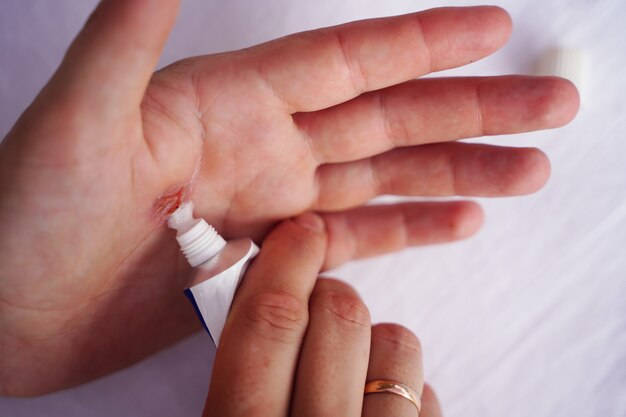Flawless Skin: Your Guide to Tackling Fungal Acne Effectively
When it comes to skin concerns, fungal acne ranks among the most misunderstood. Unlike typical acne caused by bacteria, fungal acne stems from an entirely different culprit: yeast. If you’ve been battling these pesky, itchy bumps and wondering how to banish them from your skin, you're in the right place. Let’s dive deep into the world of fungal acne, explore what causes it, and provide actionable strategies to manage it effectively.
What Exactly is Fungal Acne?
Despite its name, fungal acne isn’t truly acne. It’s a skin condition known as Malassezia folliculitis or pityrosporum folliculitis, caused by an overgrowth of yeast in the hair follicles. This can lead to small, itchy pustules that resemble traditional acne, often appearing on your face, chest, back, and arms. The good news? Understanding the unique characteristics of fungal acne can set you on a path to clearer skin.
How Does Fungal Acne Develop?
Fungal acne flourishes in warm, moist environments. Factors contributing to its development include:
- Excessive sweating: Frequent sweating, especially when not bathed promptly, can encourage yeast overgrowth.
- Tight clothing: Wearing body-hugging clothes can trap moisture and heat, providing a perfect breeding ground for yeast.
- Humidity and climate: Those living in hot, humid climates are more susceptible.
- Poor hygiene: Not washing your skin often enough can lead to an imbalance in yeast levels.
Recognizing Fungal Acne: Signs and Symptoms
Distinguishing fungal acne from regular acne is crucial for effective management. Here’s how:
- Uniform Bumps: Unlike bacterial acne, which varies in size, fungal acne consists of monomorphic papules and pustules.
- Intense Itchiness: This condition often comes with itchiness and irritation, which is not typical for bacterial acne.
- Lack of Comedones: You won’t see blackheads or whiteheads common in traditional acne.
Strategies to Manage and Reduce Fungal Acne
Armed with understanding, let’s explore practical methods to manage and reduce fungal acne.
1. Cleanse With Intention
Choose a sulfur-based cleanser or products containing zinc pyrithione to help keep yeast in check. These ingredients are antifungal, thus making them effective in combating fungal acne. Incorporate these steps into your routine:
- Wash twice daily: Consistent cleansing removes excess oils and yeast, reducing breakouts.
- Post-workout Hygiene: Always shower and cleanse your skin after exercising to fend off yeast buildup.
2. Fungal-Fighting Ingredients
Certain products formulated with antifungal components can make all the difference.
- Ketoconazole Shampoo: Originally designed for the scalp, applying it as a body wash can offer relief due to its antifungal properties.
- Tea Tree Oil: Known for its natural antifungal abilities, this essential oil might help, but should always be diluted appropriately.
3. Rethink Your Skincare Routine
The products you use every day significantly affect your skin’s yeast balance.
- Avoid heavy oils: Certain oils, like coconut oil, can feed Malassezia yeast. Opt for lighter, non-comedogenic products instead.
- Non-oily moisturizers: Choose water-based hydrating options that won't contribute to a greasy environment.
Lifestyle Adjustments for Clearer Skin
Your everyday choices can also impact fungal acne. Tweaking your lifestyle can complement your skincare regimen.
1. Stay Cool and Dry
- Wear breathable fabrics like cotton to wick away moisture from your skin.
- Heat management: Keep your environment and your skin cooler by using fans or air conditioning.
2. Balanced Diet
Some dietary adjustments can aid in reducing yeast proliferation:
- Cut down sugar and carbs: High sugar levels can increase yeast activity.
- Incorporate probiotics: Probiotics help maintain your skin’s microbiome balance, potentially reducing yeast growth.
3. Mindful Medication Use
Some medications can affect the balance of yeast on your skin.
- Limit antibiotic use: Overuse can disrupt your skin’s natural flora, allowing yeast to multiply.
When to Seek Professional Help
Self-care steps can go a long way, but sometimes professional attention is needed:
- Persistent or severe outbreaks: If your efforts don’t yield improvements or worsen conditions, consulting with a dermatologist can provide tailored solutions.
- Further evaluation: A professional can assess whether other skin conditions are present and offer prescription treatments if necessary.
Final Thoughts: Empower Your Skin Journey
Navigating the nuances of fungal acne doesn’t need to be a solitary struggle. Each step you take brings you closer to achieving healthy and clear skin. Remember, patience, consistency, and self-awareness are key components in this journey.
Quick Tips to Combat Fungal Acne
- 🧼 Use Sulfur Cleanser: Regular usage can help control yeast levels on your skin.
- 🛁 Post-Exercise Routine: Always shower after workouts to prevent yeast buildup.
- 👕 Wear Breathable Fabrics: Choose materials like cotton to keep your skin dry.
- 🍽 Adjust Your Diet: Lower sugar intake and incorporate probiotics.
- 🧴 Choose Products Wisely: Avoid heavy oils; opt for non-comedogenic skincare items.
- 🏷 Monitor Symptoms: Seek professional advice for persistent issues.
Your path to clearer skin can start today, armed with these strategies and insights to tackle fungal acne effectively!
